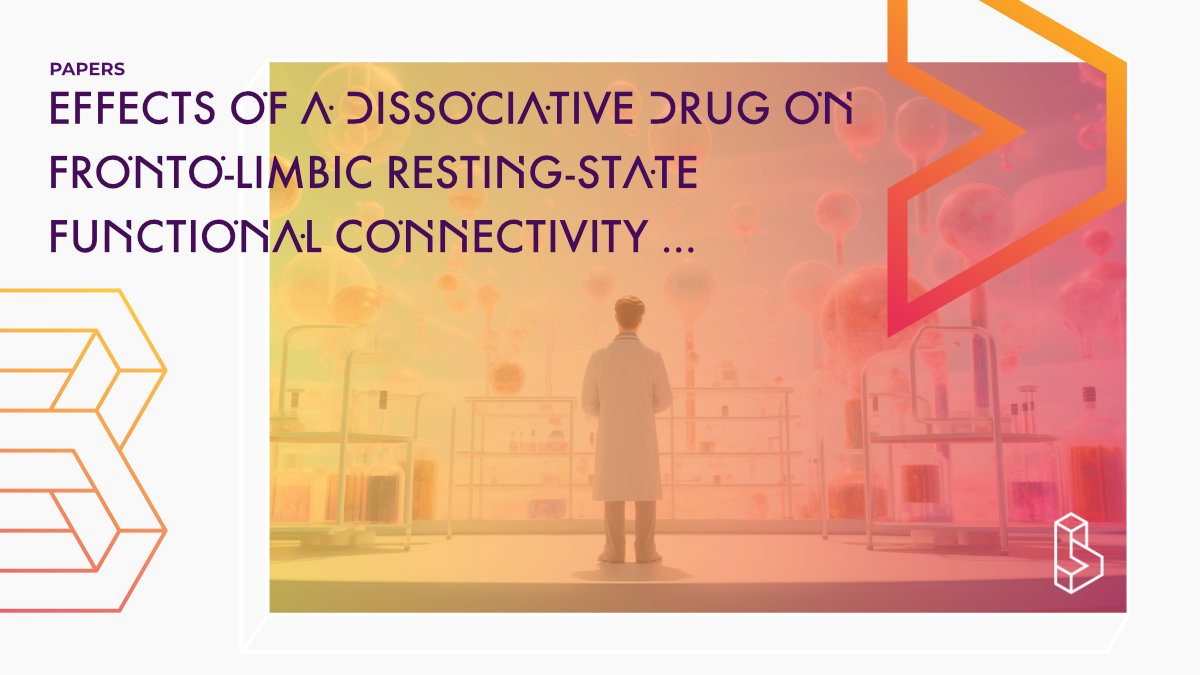This randomized controlled pilot study (n=26) investigated the effect of ketamine on resting-state functional connectivity (RSFC) between amygdala and medial prefrontal cortex (mPFC) subregions. Contrary to expectations, ketamine did not increase RSFC between these areas but instead led to a transient decrease in vmPFC-amygdala RSFC in individuals with PTSD. These results challenge prior correlations and suggest a need for further exploration and a more nuanced understanding of the neurobiological basis of dissociative phenomena in PTSD.
Abstract of Effects of a dissociative drug on fronto-limbic resting-state functional connectivity in individuals with posttraumatic stress disorder: a randomized controlled pilot study
“Rationale A subanesthetic dose of ketamine, a non-competitive N-methyl-D-aspartate glutamate receptor (NMDAR) antagonist, elicits dissociation in individuals with posttraumatic stress disorder (PTSD), who also often sufer from chronic dissociative symptoms in daily life. These debilitating symptoms have not only been linked to worse PTSD trajectories, but also to increased resting-state functional connectivity (RSFC) between medial prefrontal cortex (mPFC) and amygdala, supporting the conceptualization of dissociation as emotion overmodulation. Yet, as studies were observational, causal evidence is lacking.
Objectives The present randomized controlled pilot study examines the efect of ketamine, a dissociative drug, on RSFC between mPFC subregions and amygdala in individuals with PTSD.
Methods Twenty-six individuals with PTSD received either ketamine (0.5mg/kg; n = 12) or the control drug midazolam (0.045mg/kg; n = 14) during functional magnetic resonance imaging (fMRI). RSFC between amygdala and mPFC subregions, i.e., ventromedial PFC (vmPFC), dorsomedial PFC (dmPFC) and anterior-medial PFC (amPFC), was assessed at baseline and during intravenous drug infusion.
Results Contrary to pre-registered predictions, ketamine did not promote a greater increase in RSFC between amygdala and mPFC subregions from baseline to infusion compared to midazolam. Instead, ketamine elicited a stronger transient decrease in vmPFC-amygdala RSFC compared to midazolam.
Conclusions A dissociative drug did not increase fronto-limbic RSFC in individuals with PTSD. These preliminary experimental fndings contrast with prior correlative fndings and call for further exploration and, potentially, a more diferentiated view on the neurobiological underpinning of dissociative phenomena in PTSD.”
Authors: Sarah K. Danböck, Or Duek, Ziv Ben‑Zion, Nachshon Korem, Shelley L. Amen, Ben Kelmendi, Frank H. Wilhelm, Ifat Levy & Ilan Harpaz‑Rotem
Summary of Effects of a dissociative drug on fronto-limbic resting-state functional connectivity in individuals with posttraumatic stress disorder: a randomized controlled pilot study
Introduction
Ketamine, a non-competitive N-methyl-D-aspartate glutamate receptor (NMDAR) antagonist, induces dissociation in healthy and clinical populations. The present study focuses on ketamine administered at 0.5mg/kg over 40 min, a subanesthetic dose and infusion time frequently studied in individuals with psychiatric disorders.
Ketamine-induced dissociation psychometrically resembles chronic dissociative symptoms experienced by many individuals with PTSD, and is also associated with a unique neural profile. The dissociative subtype of PTSD is characterized by emotion overmodulation mediated by increased prefrontal activation and limbic hypoactivation during symptom provocation, and a predominant “top-down” connectivity, from the ventromedial PFC to the amygdala, as opposed to a more “bottom-up” connectivity in PTSD individuals without dissociative symptoms. All studies were observational by nature and relied on group comparisons between individuals with and without dissociative symptoms. Therefore, experimental induction of dissociation is indispensable to draw conclusions.
Find this paper
https://doi.org/10.1007/s00213-023-06479-4
Open Access | Google Scholar | Backup | 🕊
Cite this paper (APA)
Danböck, S. K., Duek, O., Ben-Zion, Z., Korem, N., Amen, S. L., Kelmendi, B., ... & Harpaz-Rotem, I. (2023). Effects of a dissociative drug on fronto-limbic resting-state functional connectivity in individuals with posttraumatic stress disorder.

